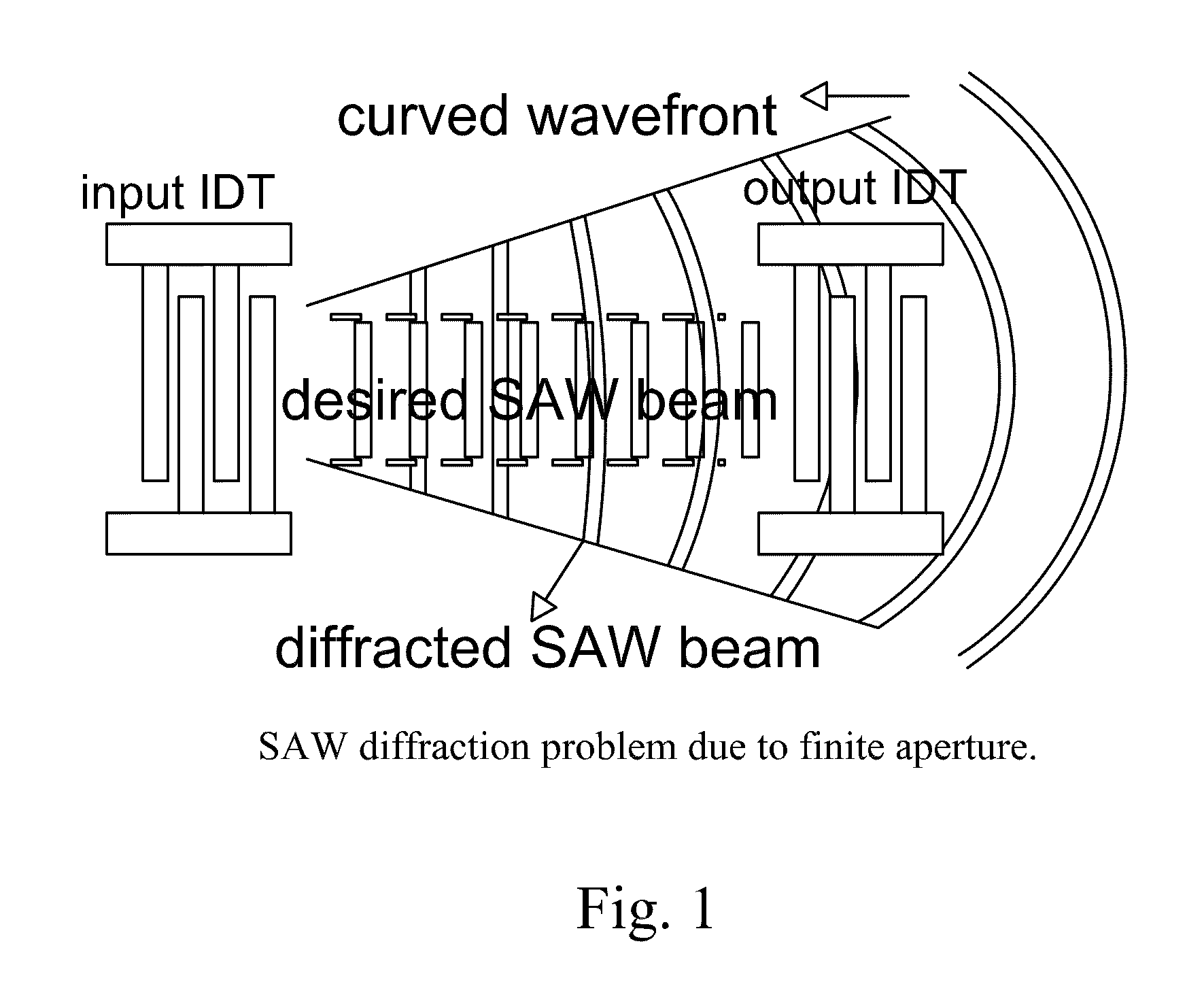Circular surface acoustic wave (SAW) devices, processes for making them, and methods of use
a technology acoustic wave, which is applied in the field of surface acoustic wave (saw) devices, can solve the problems of inability to hybridize or integrate into sensing chip technology, varying transverse acoustic wave velocities, and low sensitivity, so as to improve the arrangement performance of biosensors and the effect of rapid detection and quantification of analytes
- Summary
- Abstract
- Description
- Claims
- Application Information
AI Technical Summary
Benefits of technology
Problems solved by technology
Method used
Image
Examples
example
Biological Sensors
[0097]Surface acoustic wave devices as biosensors are also well suited for the detection of biological agents. Positioning a receptor between IDT fingers to induce a phase shift or within IDT fingers to induce a frequency shift allows for electronic detection of bioagents. These devices have the dual advantages of high sensitivity, down to picograms / cm2, and high specificity, conferred by biological receptors such as antibodies, peptides, and nucleic acids. Detection of bacteria, viral particles, and proteins has been shown with these types of sensors. Handheld biodetection systems incorporating these microsensors are contemplated as within the scope of the invention.
[0098]The surface acoustic wave biosensor arrangements may be used for real time sensing and for quantifying the levels of bacteria, e.g. Escherichia coli.
[0099]Many monoclonal antibodies with high affinity and specificity for particular bacteria are available from commercial sources as well as the Am...
PUM
| Property | Measurement | Unit |
|---|---|---|
| size | aaaaa | aaaaa |
| center frequency | aaaaa | aaaaa |
| insertion loss | aaaaa | aaaaa |
Abstract
Description
Claims
Application Information
 Login to View More
Login to View More - R&D
- Intellectual Property
- Life Sciences
- Materials
- Tech Scout
- Unparalleled Data Quality
- Higher Quality Content
- 60% Fewer Hallucinations
Browse by: Latest US Patents, China's latest patents, Technical Efficacy Thesaurus, Application Domain, Technology Topic, Popular Technical Reports.
© 2025 PatSnap. All rights reserved.Legal|Privacy policy|Modern Slavery Act Transparency Statement|Sitemap|About US| Contact US: help@patsnap.com



